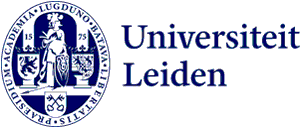
Master’s student fundraising for research into lost human sense
Can humans sense where north is, using what is known as magnetoreception? This question had master’s student Björn Keyser (Media Technology) so intrigued that he started crowdfunding to be able to study this together with the California Institute of Technology.
Many animals have a sense that enables them to intuitively perceive the Earth’s magnetic field for navigation. It was long thought that humans did not possess this sense but this has changed in recent years. Researchers have found magnetic cellular material (magnetite) in the brain. And changes in brain activity have been observed in response to changes in the Earth’s magnetic field. These findings suggest that humans are also capable of magnetoreception but that this sense is inactive.
Subconscious sensory training
Björn wants to train this ‘lost’ sense, in the same way as people with brain damage sometimes relearn a sense. This involves using ‘sensory substitution’. ‘This means that sensory information from a specific sense is fed to another one’, says Björn. ‘Such training is used with people who can no longer control their balance, for example. Sensory information that usually enters the vestibular system is fed through a device on the tongue. The patients learn to balance again and can do so without this device afterwards.’
‘I immediately wondered what we’d be able to do with that sense’
Björn hopes that similar training will return magnetoreception to our consciousness. During the training, test participants will receive information about the orientation of their heads in relation to the Earth’s magnetic field. This will help them learn to sense the magnetic field. ‘We will do that training while someone is walking or hiking, for example. They will preferably be doing something daily where they have to navigate.’ Afterwards, the researchers will look at whether the test participants can now sense the magnetic field without help.
Björn has not yet decided how the test participants will receive feedback about the magnetic field. ‘It could be a cap, for instance, that uses vibrations to communicate the extent to which someone is facing north.’ He has since made a prototype cap to try it out.
Terrible sense of direction
How did Björn come up with the idea for this research? ‘When I learned about sensory substitution, I became fascinated by the idea of artificial senses. I was looking around on the internet and saw a film from the California Institute of Technology about research into a magnetic sense that people are thought to subconsciously possess. I myself have a terrible sense of direction and thought it was a really cool idea. I immediately wondered what we’d be able to do with that sense.’
‘I thought it must have been tried before’
Björn was still looking for a topic for his master’s thesis and decided to apply sensory substitution to the ‘lost sense’ of magnetoreception. What if you use sensory substitution to train magnetoreception and then try to measure it as in the Californian research? ‘I thought it must have been tried before’, he says. But that proved not to be the case. He contacted the researchers from the Californian university and they were enthusiastic about his research idea. Björn now wants to raise 5,000 euros so that he can conduct his research together with the American researchers. The university is paying for the research but he needs money for his accommodation and living expenses during the four months he will spend in California.
Want to support Björn or find out more about the magnetoreception research? Visit his crowdfunding page or watch the video below.
Can we relearn magnetoreception?
Due to the selected cookie settings, we cannot show this video here.
Watch the video on the original website orText: Tom Janssen
Banner photo: YouTube screenshot
